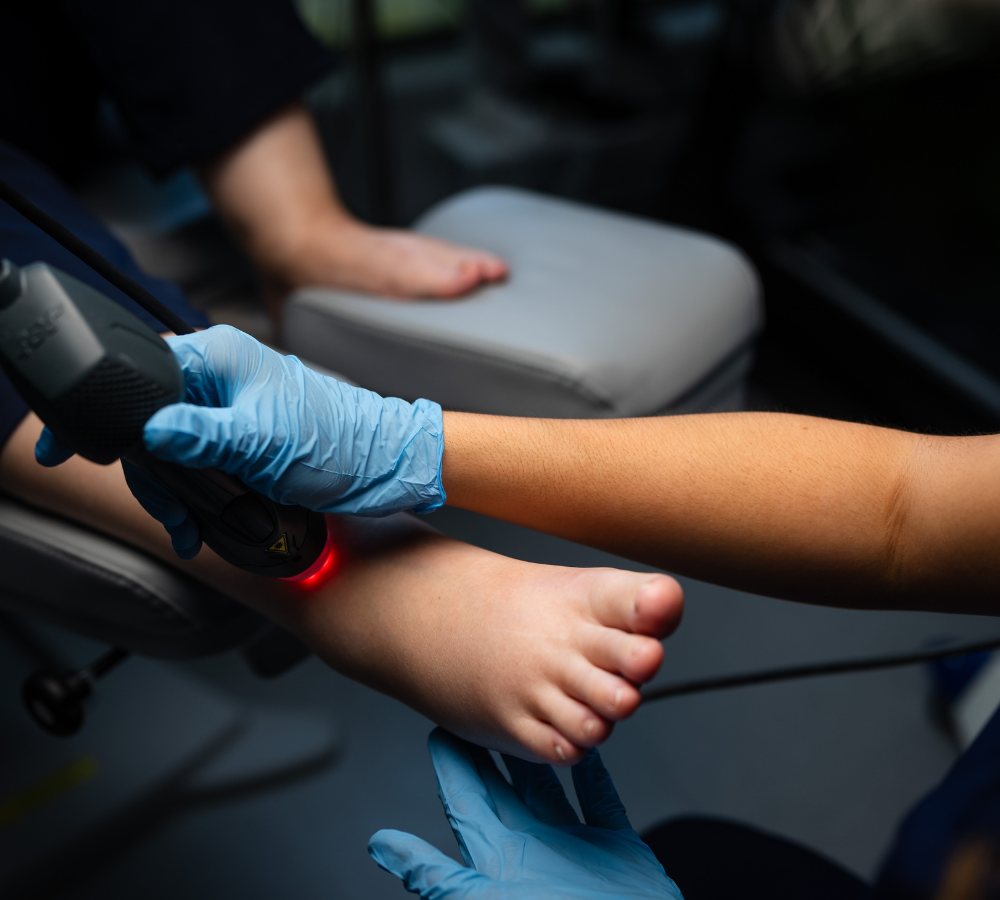.png)
Back pain is a common issue that affects millions of people worldwide, and while many assume it stems from poor posture, heavy lifting, or a sedentary lifestyle, few consider that the root cause could be much lower down the body—our feet. The feet serve as the foundation of our entire musculoskeletal system, and any imbalance, misalignment, or dysfunction in this area can have a ripple effect, potentially leading to chronic pain in the back.
The feet and spine are connected
The human body operates as a kinetic chain, meaning that movement and function in one area of the body affect other parts. Do you remember that classic song, “Your foot bone connected to your heel bone” it’s all connected.
The feet, which bear the entire weight of the body, play a crucial role in this chain. They absorb shock, provide balance, and facilitate movement. When there is an issue with foot alignment or function, it can cause compensatory movements throughout the body, leading to misalignments and discomfort in the back.
To understand how foot problems contribute to back pain, consider the biomechanics of movement. Every step you take impacts the way force is distributed throughout your body. If there is an abnormality in the feet, such as flat feet, high arches, or improper footwear, the body has to compensate elsewhere, often leading to increased stress on the lower back.
Common foot problems that contribute to back pain
Several specific foot issues have been linked to back pain, each affecting posture and movement differently.
1. Flat feet
Flat feet occur when the arches of the feet collapse, causing the entire sole to come into contact with the ground. This condition can result in overpronation, where the ankles roll inward excessively with each step. Overpronation alters leg alignment and pelvic positioning, which can lead to poor posture and strain on the lower back. Over time, this misalignment can contribute to chronic back pain, as the muscles and ligaments in the back work harder to compensate for the lack of stability in the feet.
2. High arches
On the opposite end of the spectrum, individuals with excessively high arches (cavus foot) tend to underpronate (supinate), placing extra pressure on the outer edges of their feet. This imbalance reduces shock absorption and can lead to issues such as knee pain, hip pain, and ultimately, lower back discomfort. When the feet fail to absorb shock properly, the force travels up the legs and into the spine, increasing stress on the back muscles.
3. Plantar fasciitis
Plantar fasciitis is a common foot condition characterised by inflammation of the plantar fascia, a thick band of tissue running along the bottom of the foot. This condition causes heel pain, which can alter gait patterns as individuals subconsciously adjust their walking mechanics to avoid pain. Over time, these gait changes can cause improper spinal alignment and contribute to chronic back pain.
4. Leg length discrepancy
Even a slight difference in leg length—whether due to structural differences or functional issues—can create an imbalance in the hips and pelvis. This imbalance forces the spine into an unnatural position, leading to muscle strain and lower back discomfort. Foot orthotics and proper footwear can help correct or mitigate these effects.
5. Poor footwear choices
Wearing unsupportive shoes, such as high heels, flip-flops, or worn-out sneakers, can have a significant impact on spinal health. High heels, for example, shift the body's center of gravity forward, increasing pressure on the lower back. Similarly, shoes lacking proper arch support can lead to poor foot mechanics, causing pain that radiates up the legs and into the back.
Foot problems lead to poor posture
Posture plays a major role in spinal health, and since the feet serve as the foundation of the body, any imbalance at the ground level can contribute to postural misalignment. When foot mechanics are altered due to flat feet, high arches, or poor footwear, the rest of the body compensates by shifting weight distribution and changing spinal curvature. These compensatory movements can result in:
Over time, these changes can cause lasting damage to the spinal column, contributing to conditions such as degenerative disc disease, sciatica, and persistent muscle tightness.
Diagnosing and treating foot-related back pain
If you suspect that your back pain is linked to foot problems, it is essential to seek a biomechanical assessment from a podiatrist. At Flawless Feet we can assess your gait, foot structure, and overall alignment to determine whether your feet are contributing to your discomfort.
Treatment options
Back pain is a complex issue with multiple potential causes, but overlooking the role of the feet can leave a crucial piece of the puzzle unaddressed. Because the feet serve as the foundation of our body’s movement, any dysfunction can have far-reaching effects, contributing to chronic pain and discomfort in the back. By recognising and addressing foot problems early, you can take proactive steps toward reducing pain, improving posture, and enhancing overall quality of life. Whether through proper footwear, orthotics, or exercises, investing in foot health can be a game-changer in the fight against persistent back pain.

🎄 Give the gift of wellness, comfort and a touch of luxury this Christmas.
Discover our curated foot-care gift guide, from indulgent Callen Olive treats to podiatrist-approved essentials. Perfect for family,
friends, colleagues and everyone who deserves healthier, happier feet this season.

Low Level Laser Therapy helps to treat various musculoskeletal conditions, including tendonitis, plantar fasciitis, arthritis, and wound healing.